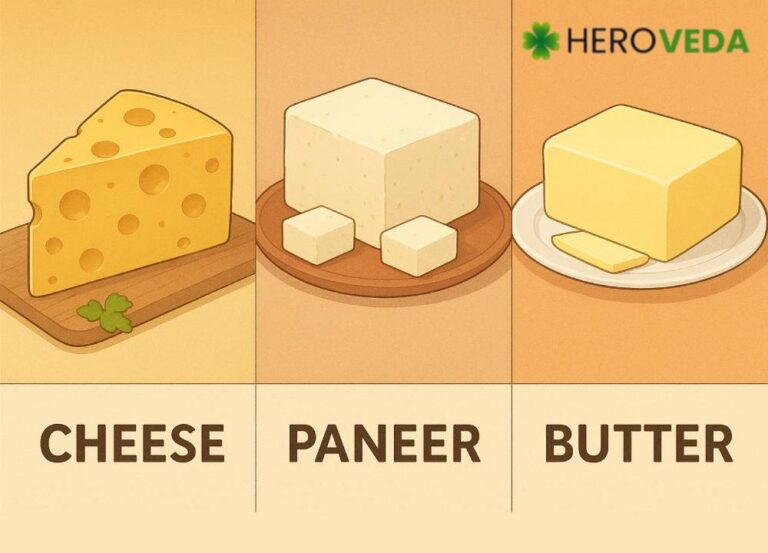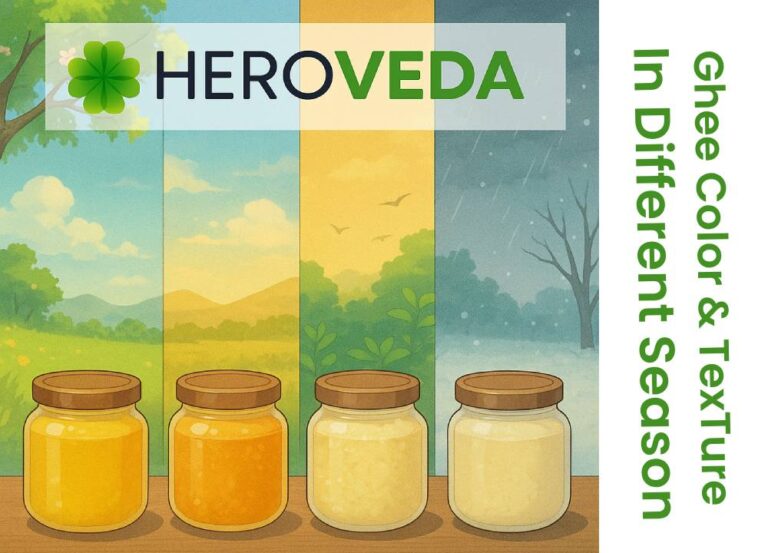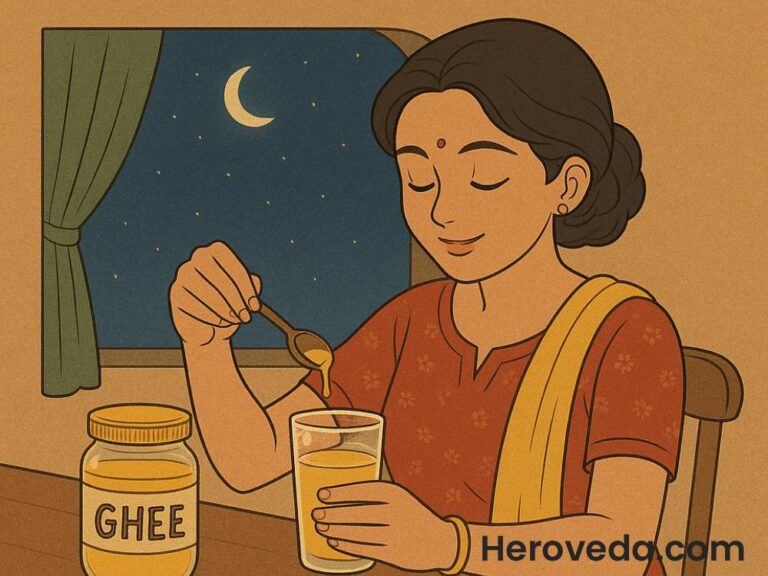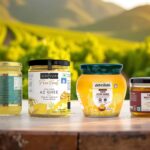Become the Healthiest, Happiest Version of Yourself — Naturally.
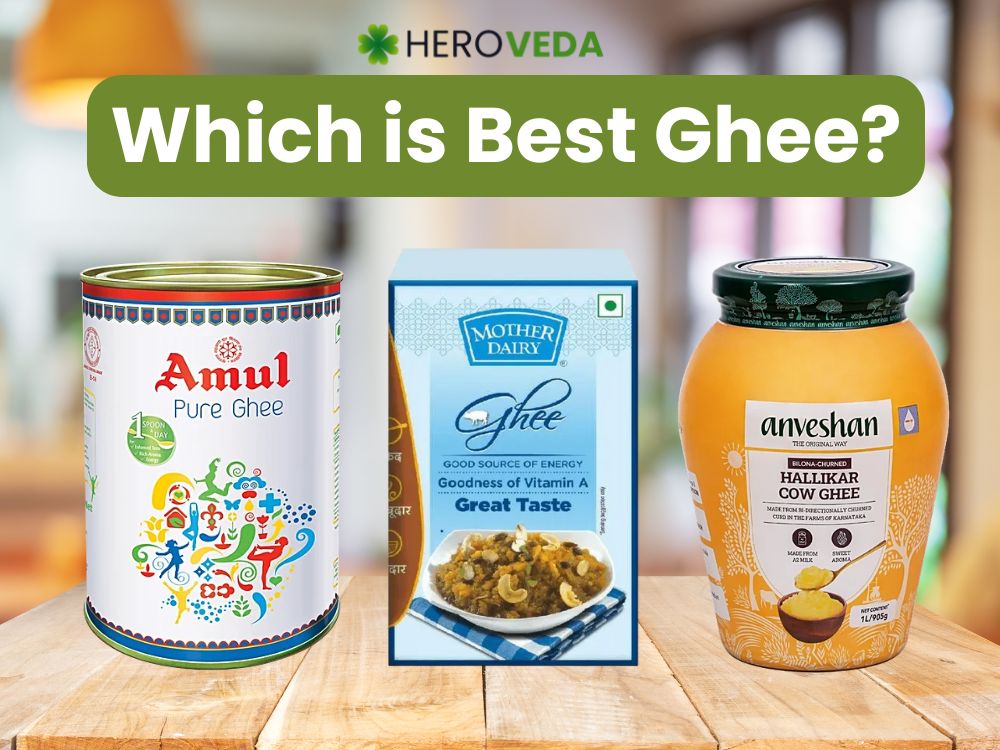
Amul Vs Mother Dairy Vs Anveshan: Which Ghee is Better?
Amul, Mother Dairy, and Anveshan are among the most recognized ghee brands in India, each promising purity, taste, and nutritional benefits. But when the question is, “Which ghee is best?”—the answer requires a deep, transparent, and nuanced dive into all aspects, from sourcing and manufacturing to taste and health.
Here is a detailed, expert-friendly, and human-like exploration of Amul, Mother Dairy, and Anveshan ghee, helping anyone make an informed choice for their kitchen and well-being.
What Makes a Great Ghee?
Ghee, or clarified butter, is a staple in Indian homes. Authentic ghee is more than just fat; it is revered for its health benefits, aroma, granular texture, and purity. The “best” ghee is determined by several criteria:
- Source of milk (A2 desi cow milk, buffalo, or mixed breeds)
- Production process (traditional Bilona method vs. industrial creamery)
- Purity and additives
- Taste, aroma, and texture
- Nutritional profile
- Packaging and storage
- Lab test and certification
- Cost and value
Brand Snapshots
| Brand | Milk Type | Method | Lab Testing | Packaging | Noted For |
|---|---|---|---|---|---|
| Amul | Cow/Buffalo (Mixed) | Industrial Creamery | A+ (Unbox Health) | Tin, jar, pouch | Widely available, classic flavor |
| Mother Dairy | Cow (Gir, Buffalo/Other Indian breeds) | Industrial/Traditional blend | n/a | Tetrapack, tin, pouch | Creamy, yellow, affordable |
| Anveshan | A2 Desi Cow (Gir, Hallikar) | Traditional Bilona | A+ (Unbox Health) | Glass jar | Purity, granular texture, farm-to-table |
All About Amul Ghee
Sourcing and Variety
Amul is a household name, offering ghee made mainly from the cream of cow or buffalo milk, or a combination. The milk fat content is high (minimum 99.7%), with less than 0.3% moisture, reflecting good shelf stability and richness.
Manufacturing
Amul uses large-scale, industrial churning and clarification. Its process is mechanized but adheres to FSSAI guidelines, ensuring hygiene and safety at scale. While traditional Bilona processing is not used, the end product is consistently pure and uniform youtube.
Taste and Aroma
Amul ghee is known for its golden yellow color, rich aroma, and classic taste. The texture is usually semi-granular, which many consumers appreciate as a sign of purity. The flavor profile blends well with Indian curries, sweets, and routine meals.
Nutritional Profile
- 99.7% milk fat amul
- Rich in fat-soluble vitamins (A, D, E, K)
- Lactose and casein-free (safe for most with lactose intolerance)
Lab Tests and Purity
Amul’s ghee has received high ratings in third-party lab analyses. The product is rated A+ by Unbox Health, with a near-perfect aggregate score (9.88/10), signaling strong compliance with purity and safety norms. unboxhealth
Packaging
Offered in tin cans, glass jars, and hygienic pouch packs with varied shelf lives (up to 12 months).
Price and Availability
- 500 ml pouch: ~₹325-350
- 1 liter tin: ~₹600-650youtube
- Ubiquitous availability across India
Pros & Cons
Pros
- Consistent flavor and aroma
- Very hygienic, tested product
- Widely available
Cons
- Not made from A2 milk exclusively
- Industrially processed, lacks artisanal touch.
All About Mother Dairy Ghee
Sourcing and Variety
Mother Dairy offers ghee made from cow milk, including select products from Desi Gir cows. Most retail packs are produced using a blend of milk from Indian breeds.
Manufacturing
Mother Dairy mostly employs a traditional clarification process, modernized for scale. The ghee is made from butter or cream, clarified to remove moisture and solids, then cooled and packed hygienically.
Taste and Aroma
The ghee is noted for a rich, creamy texture and a yellow hue, owing to beta carotene (especially in Desi Gir variants). The taste is light, but with a distinct, nutty aroma that enhances Indian savouries and sweets.
Nutritional Profile
- High in fat-soluble vitamins (A, D, E, K)jiomart
- Contains healthy fatty acids
- Free of trans fats, according to most sources
- Good antioxidant properties
Purity and Certification
Mother Dairy meets FSSAI standards and claims high purity, but its ghee is not always made exclusively from A2 milk. It is typically not made using the Bilona technique for all batches. Some specialty variants offer Gir cow ghee, made from grass-fed cows with more traditional processing, at a premium price.
Packaging
- Comes in tetrapacks, tin cans, pouches
- Shelf life up to 12 months
Price and Value
- 1-liter pouch: ₹500-600
- Gir Cow Ghee: Premium pricing
- Easily available everywhere
Pros & Cons
Pros
- Clean, buttery taste and aroma
- High vitamin and antioxidant content
- Good price-to-value ratio
Cons
- Not always A2 cow-only milk
- Some industrial processing, not true Bilona ghee.
All About Anveshan Ghee
Sourcing and Variety
Anveshan’s ghee is produced exclusively from the milk of indigenous Indian cows (A2 Gir, Hallikar breeds), sourced from small rural farms. The A2 protein in these breeds is prized for its easy digestion and nutritional benefits. anveshan
Manufacturing
Anveshan uses the traditional Bilona method: curdling fresh milk, churning it into buttermilk, separating the butter, and then simmering the butter at low heat to make ghee. This small-batch process preserves nutrition and taste. anveshan
Texture, Taste, and Aroma
Anveshan ghee is renowned for its granular “daanedaar” texture—a hallmark of slow cooling and purity. The taste is nutty, aromatic, and richer than industrial ghee, often noted to feel “home-like.” The aroma and color are strong indicators of its unrefined, traditional qualities.
Nutritional Profile
- Made from A2 desi cow milk (beta-casein protein)
- No hormones, antibiotics, or pesticides used in cow feed.
- Higher omega-3 and omega-6 fatty acids balance
- Rich in vitamins A, D, E, and K
Lab Test and Purity
Anveshan Ghee scores A+ (10/10) from Unbox Health, based on purity, ingredient quality, and lab results. Each batch is reportedly lab tested for adulterants and is naturally free from additives. unboxhealth
Packaging
- Glass jars (eco-friendly, ideal for preserving aroma)
- Batch-coded for traceability
Price and Availability
- 500 ml glass jar: ~₹900-1500
- 1 liter: higher-end pricing, but reflects the cost of small-batch, artisanal production.
- Primarily available online and in select premium stores
Pros & Cons
Pros
- High purity and grainy texture proof of Bilona process
- Made from A2 cow’s milk only
- Excellent nutrition, flavor, and aroma
- Lab-tested and environmentally responsible packaging
Cons
- More expensive than industrial brands
- Not as easily available in offline stores
Also Read: 13 Best Desi Ghee Brands In India
Expert Comparison Table
| Feature | Amul Ghee | Mother Dairy Ghee | Anveshan Ghee |
|---|---|---|---|
| Source of Milk | Cow/Buffalo (Mixed) | Cow (Includes Desi breeds) | A2 Desi Cow (Pure) |
| Preparation Method | Industrial Creamery | Industrial/Traditional Blend | Traditional Bilona |
| Lab Test/A+ Rating | Yes | Not publicized | Yes |
| Texture | Semi-granular | Creamy, some granular | Fully grainy (“daanedar”) |
| Aroma & Taste | Rich, classic | Buttery, nutty | Aromatic, nutty, robust |
| Vitamins/Minerals | A, D, E, K | A, D, E, K | A, D, E, K + higher Omega 3/6 |
| Pure A2 Milk | No | Some variants | Yes |
| Adulterants | Consistently clean | Clean, but not always pure A2 | Strictly tested, clean |
| Packaging | Tin, pouch, jar | Tetra, tin, pouch | Glass jar |
| Shelf Life | 6-12 months | 6-12 months | 6-9 months |
| Price Range (500ml) | ₹325–350 | ₹250–400 | ₹700-900 |
| Availability | All stores, online | Almost everywhere | Online, select stores |
| Sustainability | Corporate model | Corporate model | Small farm, eco-friendly packaging |
| Bilona Process | No | Rarely (only in premium) | Always |
What Do Real Users Say?
- Amul: Praised for consistent quality, good taste, and reliability, especially for daily use and Indian desserts. Some feel it lacks the depth of home-made ghee or Bilona variants.
- Mother Dairy: Loved for its creamy texture and value for money. Preferred by those seeking an affordable, familiar ghee flavor, but not singled out for traditional qualities.
- Anveshan: Frequently rated as “best for health and purity,” especially by those wanting Bilona ghee from A2 cows. Users love the granular texture, aroma, and lab-backed purity, but price and offline unavailability are drawbacks.
The Science: Why A2 and Bilona Matter?
A2 Milk: Contains only A2 beta-casein protein, which is easier to digest and may be less inflammatory for some compared to the A1 protein found in most commercial cow milk.
Bilona Method: An ancient Indian technique involving natural curd formation, churning, and slow-firing to retain more vitamins, enzymes, and flavor. This process also fosters a granular texture called “daanedar,” indicating purity and proper preparation.
Adulteration Check: Lab-tested ghee ensures the absence of trans fats, artificial colors, or palm/vegetable oil blends. Both Amul and Anveshan provide third-party testing; Mother Dairy does not always make lab data public.
When to Choose Which Ghee?
Choose Amul If:
- Consistency and ubiquity matter most
- Need for large-volume cooking, baking, daily use
- Affordability with decent purity
- Not specifically seeking A2 or Bilona ghee
Choose Mother Dairy If:
- Prefer creamy, mild ghee flavor
- Seek value-for-money from a trusted Indian company
- Don’t mind mainstream production methods
Choose Anveshan If:
- Maximum purity and health rank highest
- Committed to traditional and sustainable food practices
- Want to avoid machine-processed ghee
- Willing to pay a higher price for A2, farm-sourced, Bilona-churned ghee
Honest User Experience Table
| Brand | Taste | Aroma | Texture | Health Impact | Ethics & Purity |
|---|---|---|---|---|---|
| Amul | 4/5 | 4.5/5 | 4/5 | 4/5 | 4.5/5 |
| Mother Dairy | 4/5 | 4/5 | 3.5/5 | 4/5 | 4/5 |
| Anveshan | 5/5 | 5/5 | 5/5 | 5/5 | 5/5 |
FAQ
Is Anveshan worth the price premium?
If purity, tradition, and health benefits (A2 protein, no chemicals) are essential, yes—especially for children, seniors, and health-focused households.
Is Amul ghee safe for daily use?
Absolutely; Amul’s lab tests, industrial hygiene, and consistency make it ideal for daily use, even if it’s not A2-only.
Is Mother Dairy ghee pure?
Mother Dairy ghee is certainly pure by FSSAI standards. But unless you are buying specific “Desi Gir” or “A2 Cow” variants, you get a blend, not exclusively A2 milk.
Does “grainy” (daanedar) texture mean anything?
Yes! Granularity, especially prominent in Anveshan, results from traditional slow cooling and is often lost in mass-produced ghee. It is an indicator of authenticity, especially from Bilona preparation.
What about shelf life and storage?
All three brands offer 6-12 months shelf life if stored in a cool, dry place and tightly sealed after use. Glass jars (Anveshan) are preferable for aroma and health, but tin/jar/pouch formats from Amul and Mother Dairy also preserve ghee well.
Expert Perspective
From a health and tradition perspective, Anveshan is the clear winner: A2-only, Bilona-prepared, flavory, grainy ghee backed by lab tests and sustainable sourcing—ideal for anyone prioritizing purity and traditional values.
On the other hand, Amul and Mother Dairy remain the best for daily household use where reliability, taste, and cost-effectiveness rule. Amul edges out as the staple for those who trust brands with a longstanding track record and lab-verified products.
For tight budgets and large families, Mother Dairy hits a sweet spot, especially when taste and price matter more than “artisanal” status.
The Verdict
- Best For Health & Tradition: Anveshan Ghee
- Best For Daily Cooking & Availability: Amul Ghee
- Best Value On Budget: Mother Dairy Ghee
Everyone’s “best” is unique but knowing how ghee is made, sorted, tested, and consumed can help anyone select the right one for their table.

